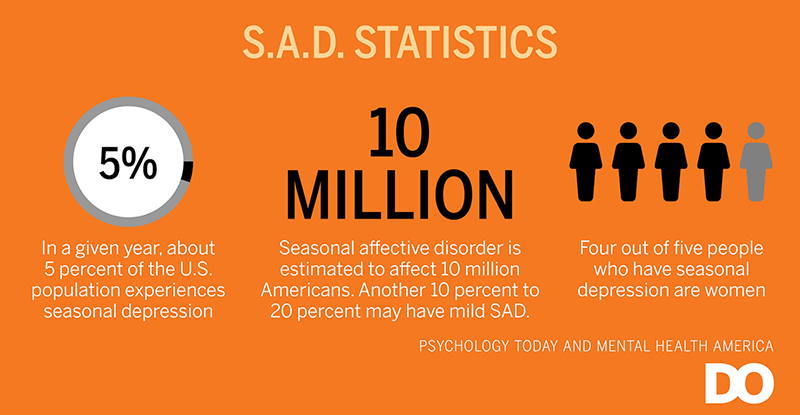
Graphic is courtesy of About You Magazine
As the weather gets colder and the days get shorter, many people with Seasonal Affective Disorder (SAD) begin to feel as though going to school, work, and even waking up are simply pointless. Seasonal Affective Disorder, or as it is more commonly known, Seasonal Depression, is a major issue among American youth. According to the American Psychiatric Association, SAD affects only about 5% of people in the U.S, but remains an issue in their lives for over 40% of any given year.
Symptoms of SAD can vary from invisible to extremely overt, and will likely manifest differently in each person. A few common indicators include loss of interest in activities that were once enjoyed, waves of fatigue, brain fog, changes in appetite, trouble sleeping too much or not enough, feeling a loss of self, and suicidal thoughts (in extreme cases).
People who are most prone to having SAD are young females with similarly afflicted relatives, most of whom live in areas with less sunlight during winter months. These conditions can induce other mental health issues as well, but SAD is the most common culprit.
It can be difficult to know how to help a struggling loved one. Whether it is better nutrition, more emotional support, or stress management practices, teenagers who struggle with SAD may need extra assistance from adults and peers throughout their day.
Although these can be effective ways to alleviate the struggle of someone with SAD, there is no way to truly fix someone else’s mental health issues. It is important to encourage struggling loved ones to seek support from therapists, dietitians, or psychiatrists. Remember to check in on loved ones during colder months and encourage them to seek extra support when needed.